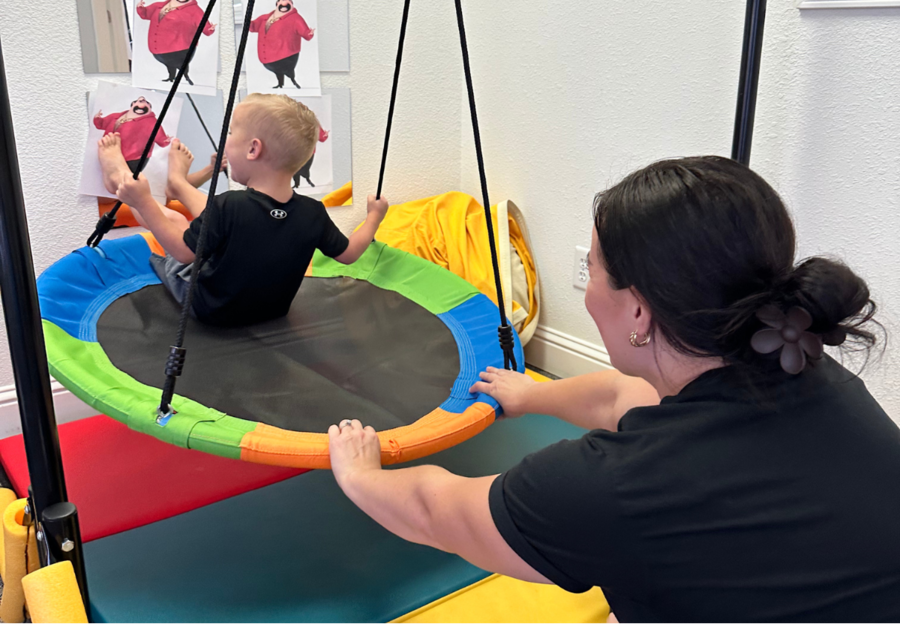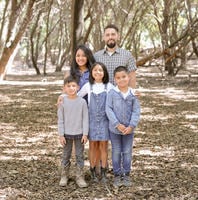Gestalt Language Processors are described by professionals in our field as, “intonation babies.” These children learn and use language in chunks of words that serve as one single unit of meaning. This way of learning language is NOT a disorder and is a valid way of communicating. But, it’s important to know that a very specific therapy approach is needed if your child’s language progress plateaus. For kids who learn language in this way, I will often hear parents tell me that their child has a large vocabulary, but they “aren’t using their language functionally,” “aren’t able to have reciprocal conversations,” and/or “made a lot of progress at first, then stopped.”
Gestalt Language Processors initially assign an overall “feeling” to a word, phrase, or sentence. These words, phrases, and sentences are called “gestalts.” These gestalts are commonly known as “echolalia” or “scripting.” They can be spoken as an immediate response, a delayed response (such as hours or days later), or both. Because echolalia appears so different from the norm-- Analytic Language Processing, the method of language development seen in most children--it is frequently viewed as a disordered language pattern that should be treated, eliminated, and ignored as to not reinforce it. However, Gestalt Language Processing or echolalia is a natural method of language acquisition with distinct developmental milestones, just as Analytic Language Processing has distinct developmental milestones (Blanc & Lyon, 2012; Prizant & Duchan, 1981).
The Natural Language Acquisition framework was developed by Marge Blanc in order to assess and treat the language of gestalt language processors and children who use delayed echolalia to communicate. Marge Blanc’s work was based on Dr. Barry Prizant’s research proving that echolalia communicates and that some children continue to communicate with the same phrases and sentences but are unable to produce self-generated language without assistance.
These are the different stages in the Natural Language Acquisition Process:
Stage 1: Echolalia- gestalts/echolalic utterances may seem out of context, but the child is using them to communicate.
Stage 2: Mitigated Echolalia - mitigated gestalts or echolalic language occur when the child has figured out they can move a piece of their memorized chunk of language and combine it with another piece of language to form a “new” utterance. Ex. “let’s get out of here,” and “want some more,” becomes “let’s get some more,” or “want out of here.”
Stage 3: Single Words - single words and combinations occur when the child has begun to recognize words as single units and can take words and move them around to create new combinations.
Stage 4: Self-Generated Original Sentences with Beginning Grammar - more than two words and combining them into a novel utterance. This is when grammar can begin to be addressed and gestalt processors begin to look at formulating sentences that are completely self-generated.
Signs your child might be a gestalt language processor:
-They may not have words but they hum or sing songs.
-They may not have words but their sounds have rich conversational intonation.
-They use what sounds like jargon.
-They have long scripts from things others have said or from shows/movies.
-Their phrases/sentences may sound disfluent or choppy.
-Their grammar and word order
might sound “not quite right.”
-They replay certain parts of shows repeatedly when watching on iPad.
If you think your child may be a gestalt language processor, here’s what you can do:
· Use statements containing “we” and “I” instead of, “you” or “child’s name”
· Acknowledge what he/she says, even if you don’t know what he/she means.
-This could look like a head nod, a smile, or repeating a keyword.
· Try and investigate to see what their scripts or phrases could mean.
· Model appropriate language models based on the stage your child is in during teachable moments.
· Add in wait time after modeling language (up to 10 seconds) before modeling again or prompting again. It is important to ensure he/she has time to respond to prompts, questions, and conversational attempts before repeating so he/she has adequate time to process the information.
· Keep an inventory or log of various phrases/words
· Engage your child in activities that interest him/her without asking any questions or quizzing him/her. Simply talk, comment and allow him/her to spontaneously contribute to the “conversation.”
· Refrain from asking questions but rather model what he/she might want to say in a given situation. “Say it as they would if they could.” Ex:
Child: Don’t worry I’ll help you find your mama! (learned gestalt)
Adult: It’s missing. I don’t know where it is.
Child appears sad: instead of saying “Are you sad?” we can say, “I’m so sad!”
· Encourage activities that promote spontaneous language (outdoor play, crafts, dress up, doll and pretend play) and continue to play in a way that allows for conversational exchange and social engagement. Make small changes each time a pretend play scenario is played out to encourage flexibility in both play and language.
•Reach out to a Natural Language Acquisition trained speech-language pathologist in your area—I am trained (and so are the other therapists who work at Communication Blooms).
*You can check the Meaningful Speech Registry for therapists in other areas.
I would love to help your child on their journey in moving from echolalia/scripting to self-generated language.
Contact me to get started on your child’s meaningful communication journey!
(209) 683-3427
mackenzie@communicationblooms.org



